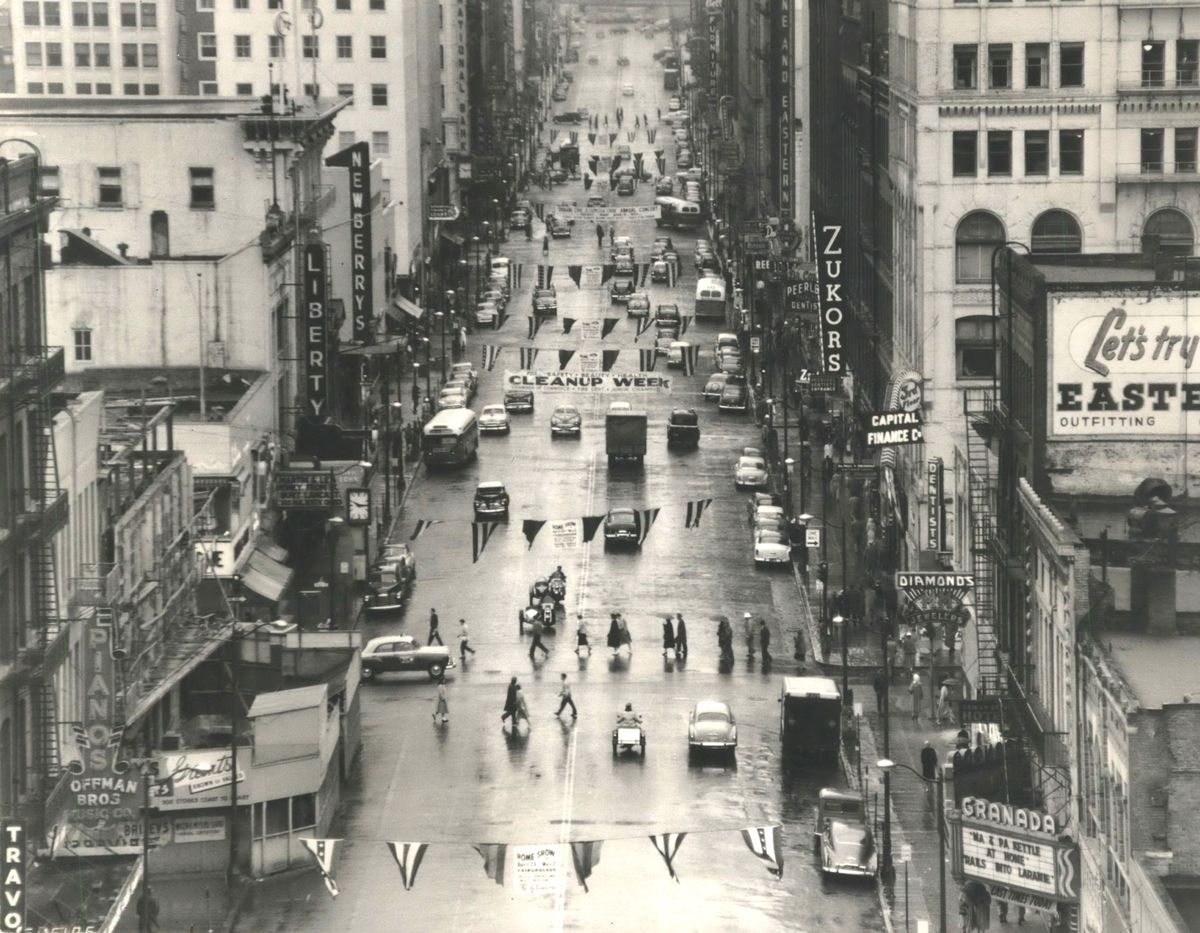Then and Now: Cleanup Week

At the 1905 Lewis and Clark exposition in Portland, Oregon, Spokane representatives Frank W. King and Roland Waltz saw a display from Western Washington that included a lighted sign reading “Watch Tacoma Grow.”
The pair was inspired to return home and form the 150,000 Club to promote the goal of pushing Spokane’s population to 150,000 people by 1910. Spokane was growing rapidly, and the club was confident about this next milestone.
Membership dues were only $1 a year. The first year, they collected $1,600.
The club’s goals and purpose overlapped with the Spokane Chamber of Commerce’ Publicity and Promotion committee, which also raised money for beautification projects.
The money would help to promote the city and recruit people and businesses to Spokane, as well as to produce moving picture advertisements.
The Spokane Chronicle quoted an editorial in the World’s Worker newspaper that called Spokane the “cleanest little town of its size in the United States.”
In 1910, the 150,000 Club proposed an annual “Cleanup Week” as a one-week citywide effort every spring to spruce up the city. The mayor of Spokane’s proclamation gave permission to citizens to burn trash and tree branches without a special permit. Neighbors were encouraged to clean up their own property. School children were encouraged to clean up school grounds. Businesses and volunteer groups were asked to plant shrubs and trees.
Over the years, the club faded away and the enthusiasm for the event declined. An editorial in a 1927 Spokesman-Review attempted to garner new interest, saying that “the six days of concentrated springtime effort is well worth while.” The editorial added, “A spotless town wins favorable comment from visitors.”
The club fell short of the goal and the 1910 population was around 104,000 people. The city finally hit 150,000 citizens in 1943.
The annual event usually culminated in a parade or a street dance.
After World War II, the annual cleanup was taken over by the Junior Chamber of Commerce, known as the Jaycees. In later years, the event was often referred to as “Cleanup, Mixup, Paintup” week.
Although the citywide event has been discontinued, it is common for the city, fire departments, environmental groups and state agencies to have events similar to “Cleanup Week” each spring.